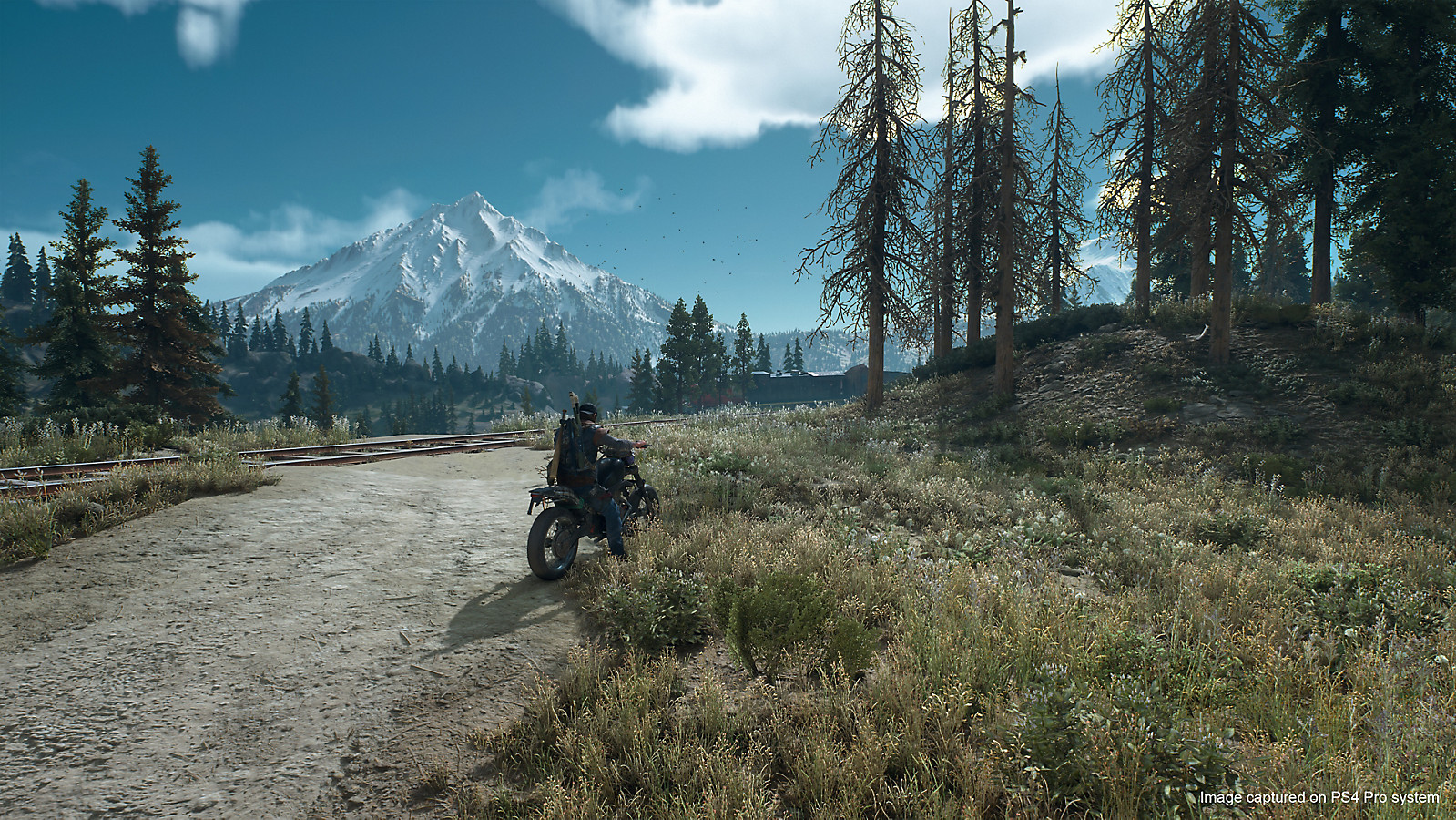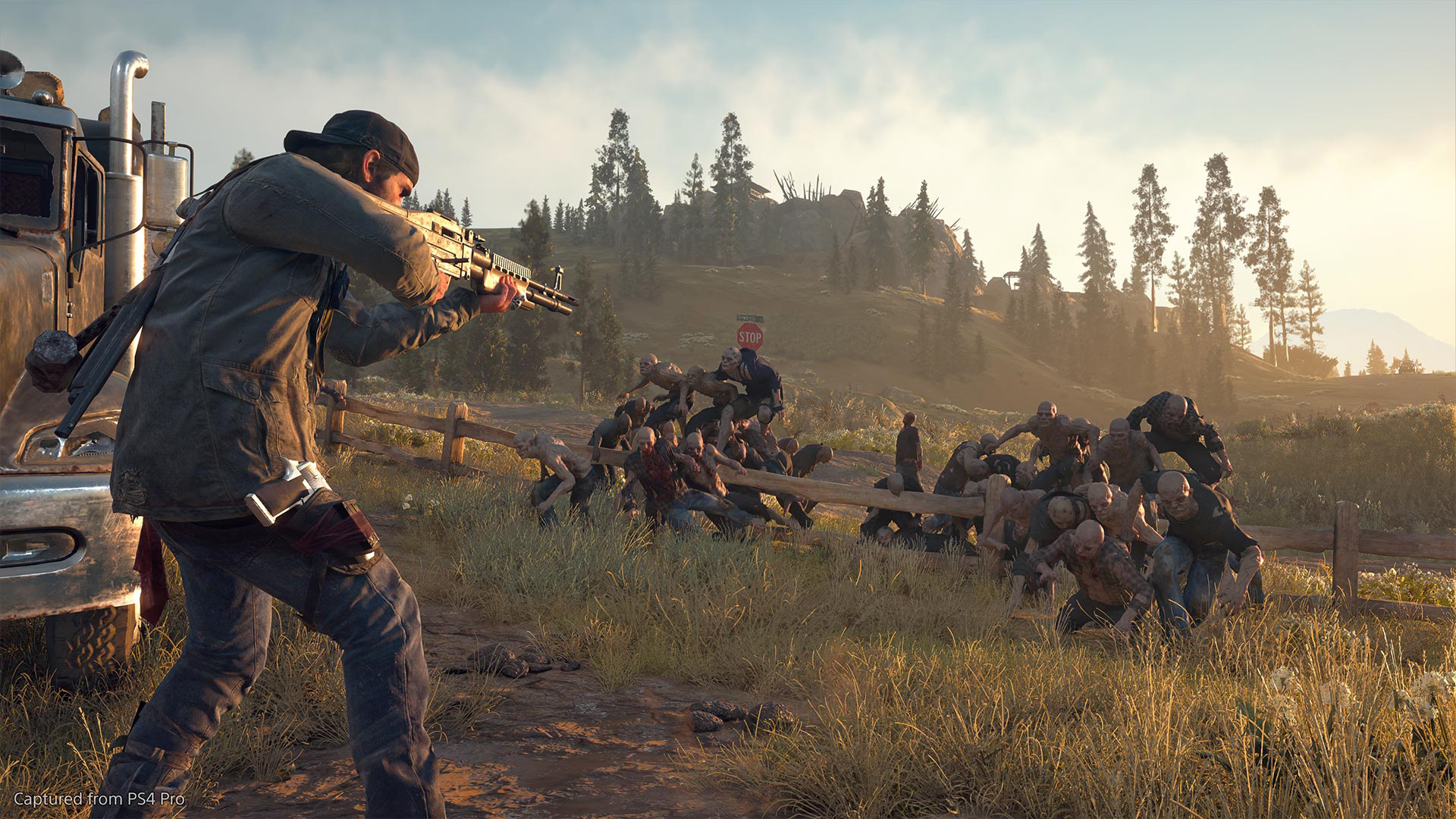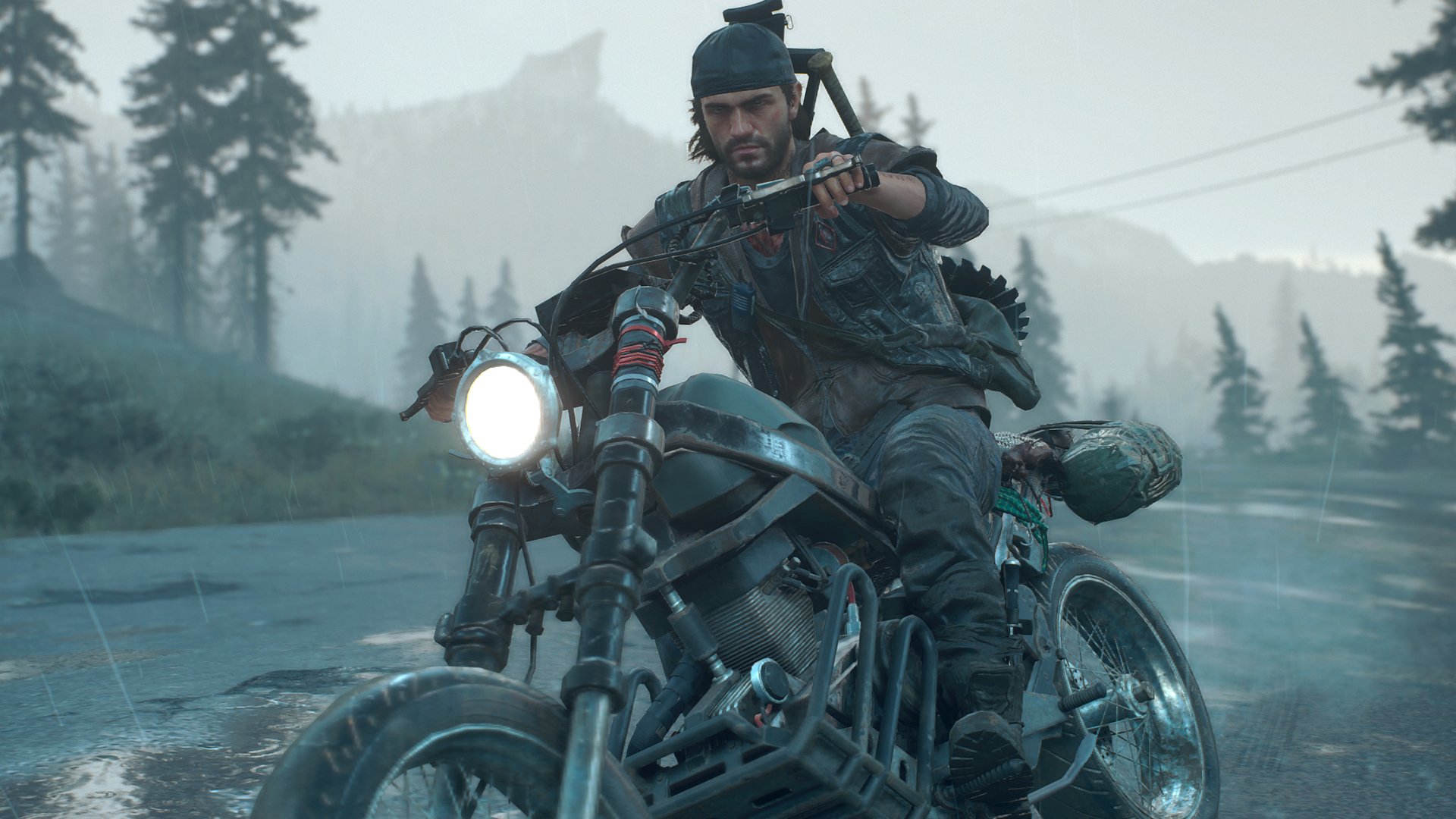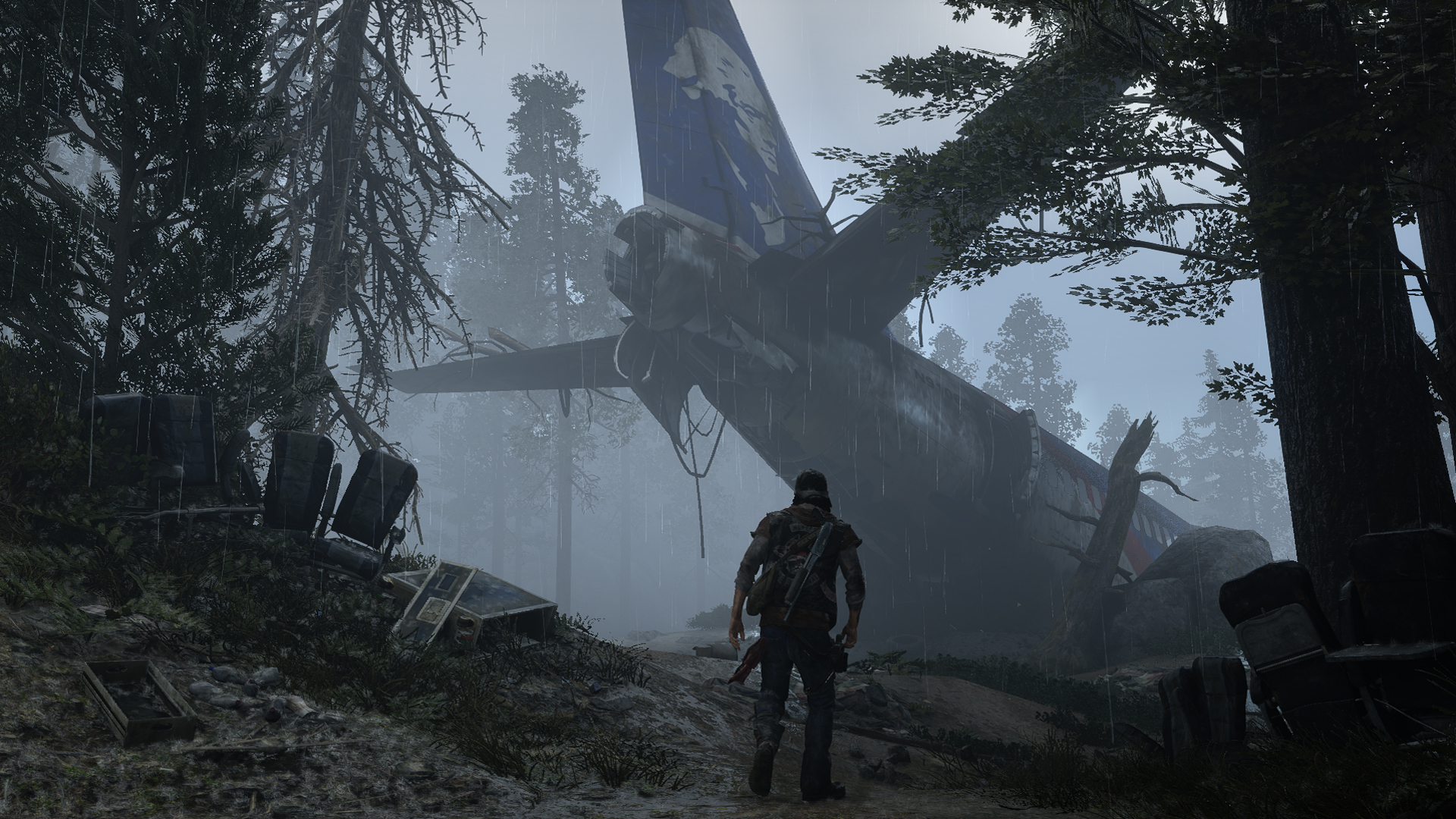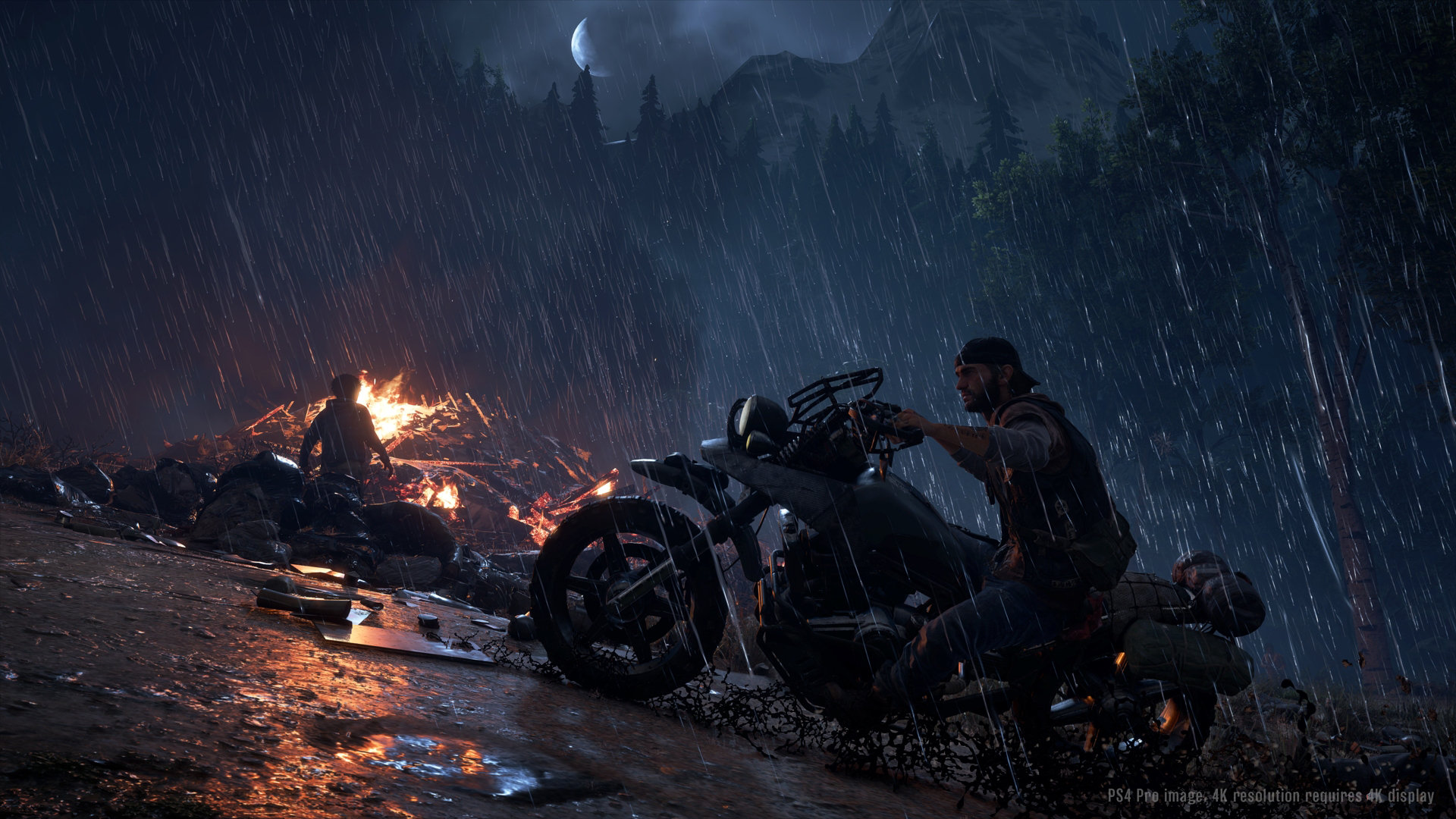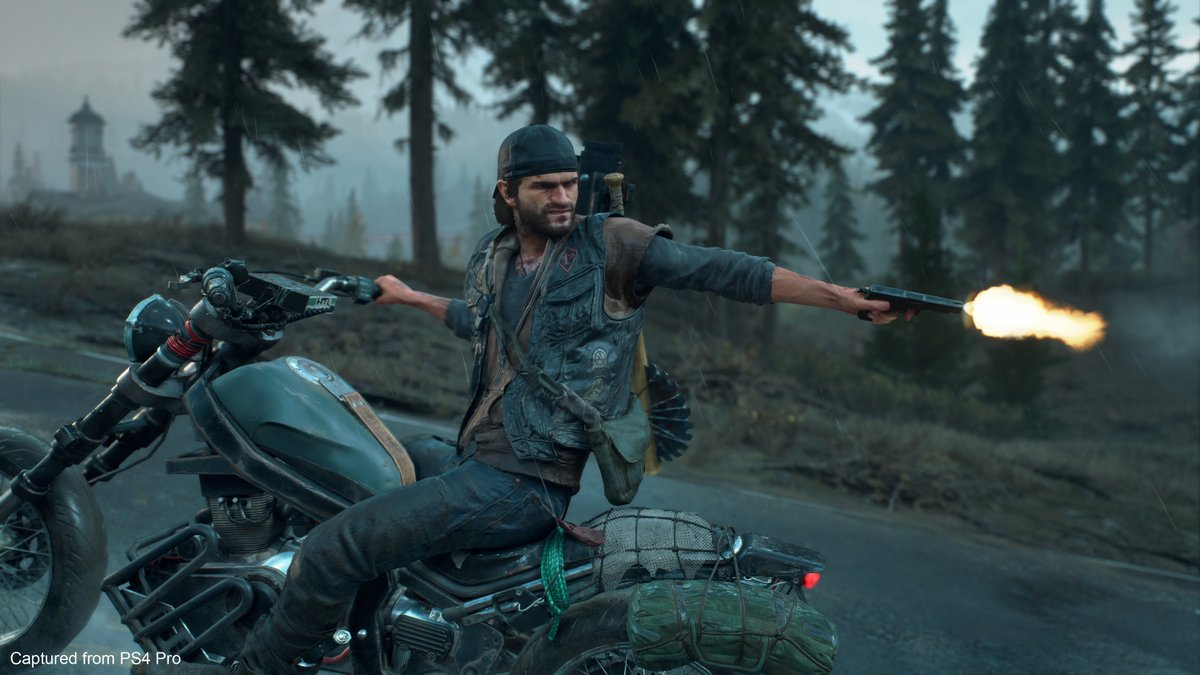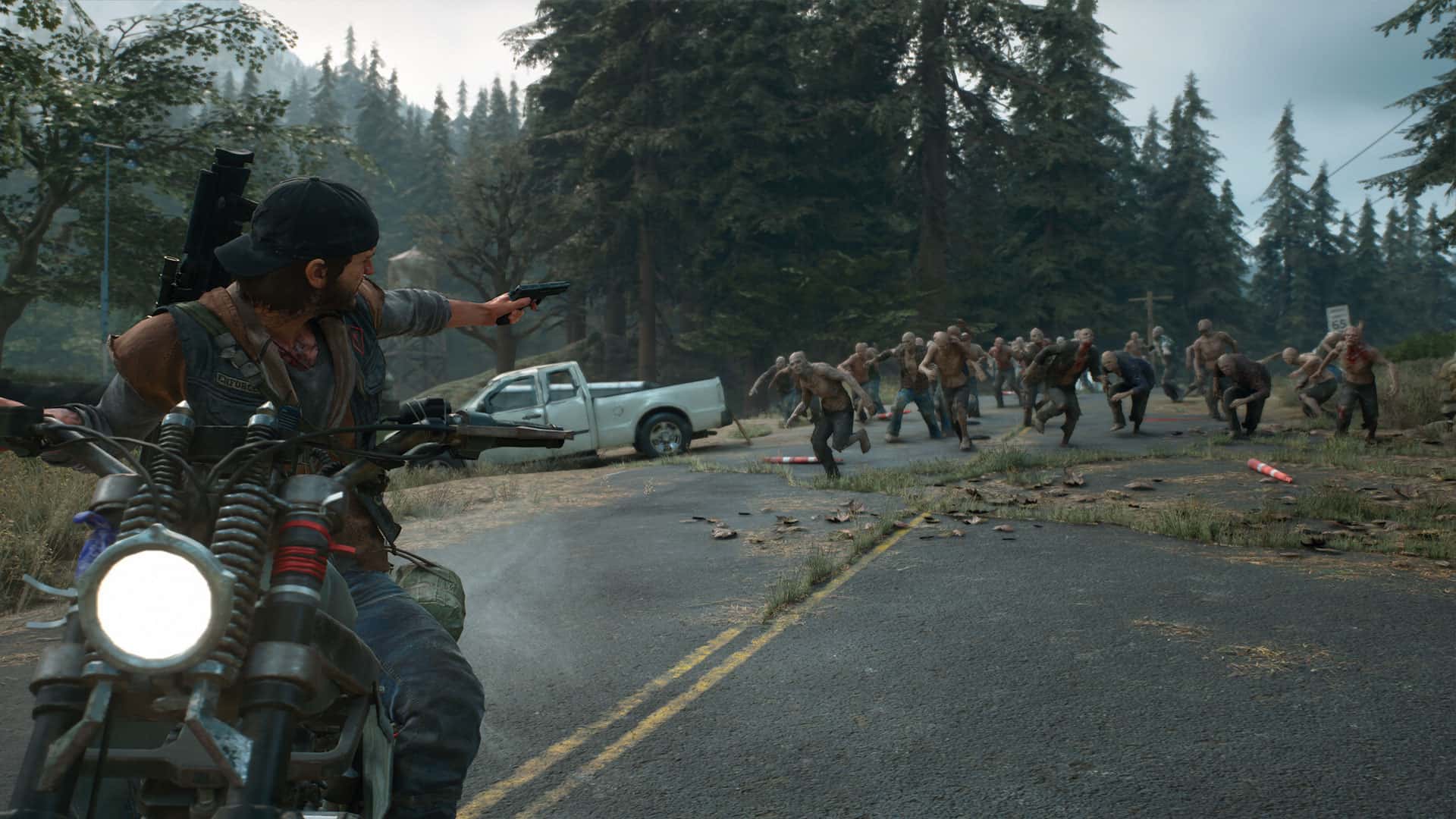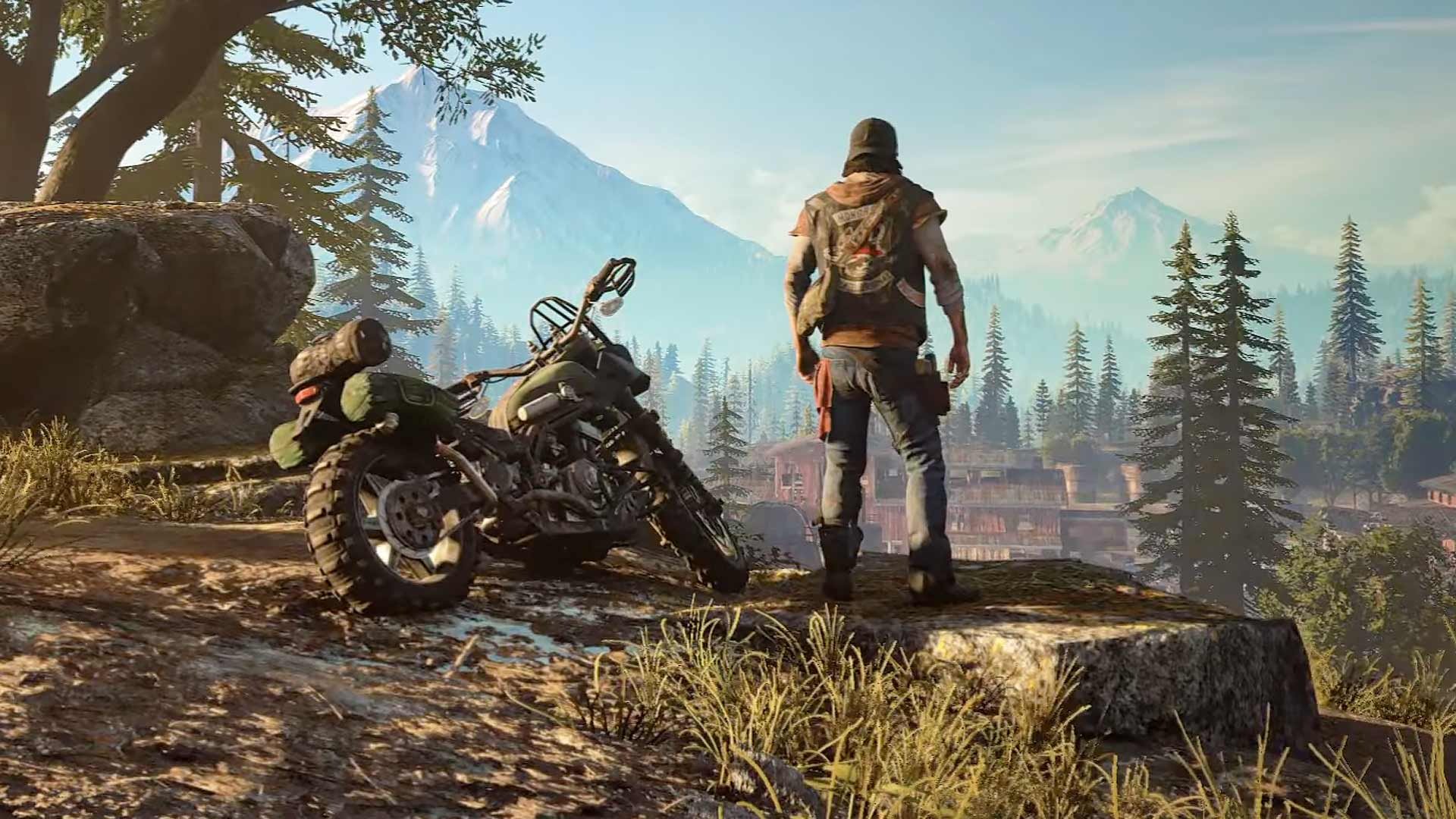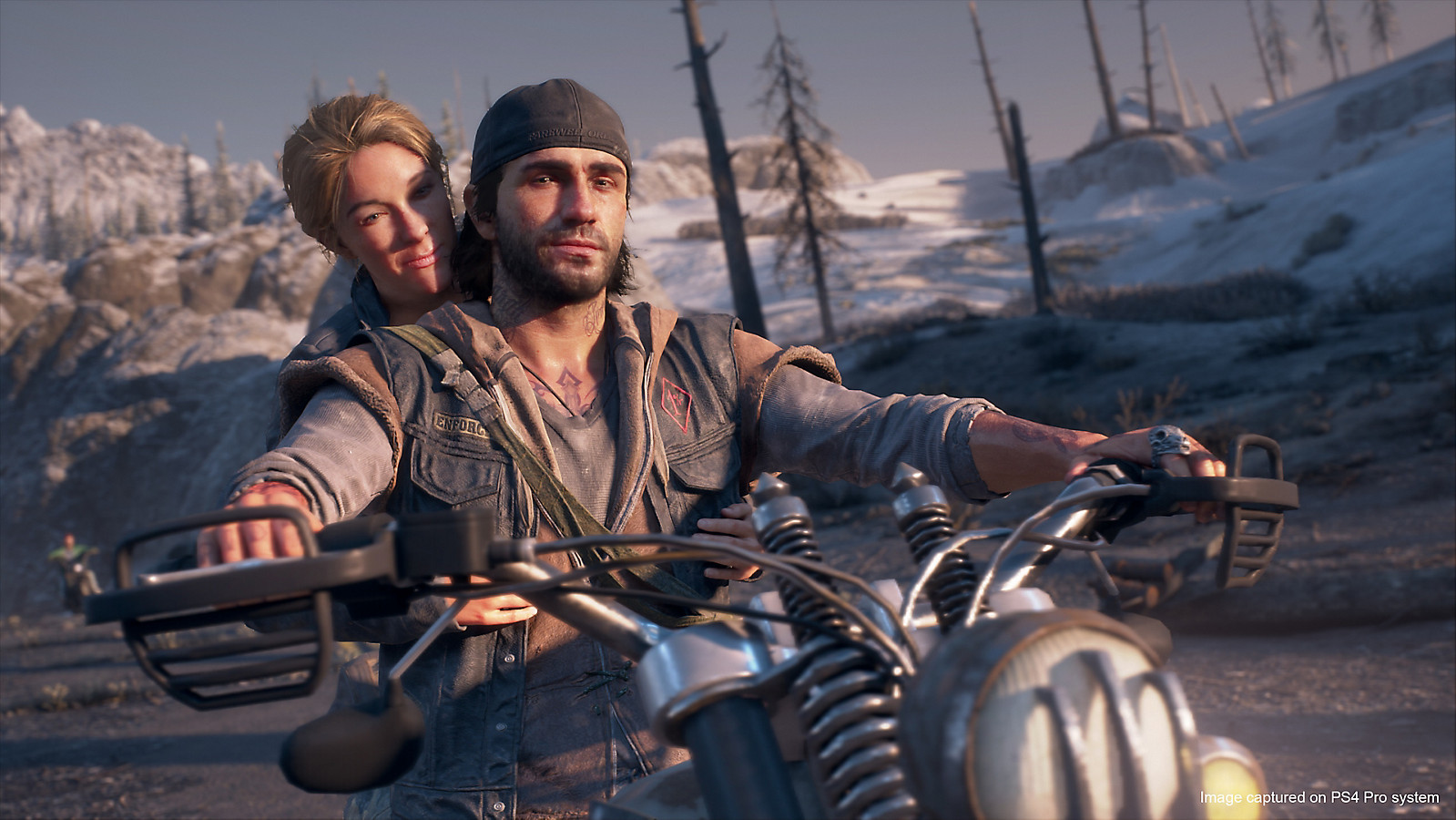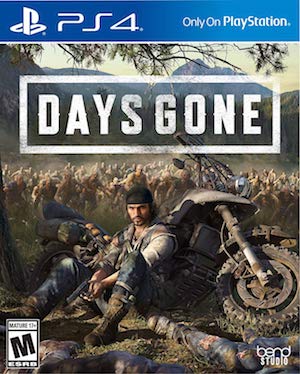
Ah, the elusive Days Gone. Years after the E3 2016 announcement, the PS4 exclusive is finally available in all its zombie-horde-slaying glory. Reviews have been mixed. On the one hand critics are frustrated with what’s been described as feeling “a few years too late.” It’s been almost universally panned for its generic, zombie-slaying plot. But—and this is crucial—like we said, reviews are mixed. While the story suffers a bad case of Walking Dead-itis, Day’s Gone’s technical accomplishments have received a lot of praise. Luckily for Days Gone, this feature is a tech deep-dive. The technology powering Days Gone is undeniably impressive. Let’s take a closer look at it.
ENGINE
Days Gone makes use of a modified version of the Unreal 4 Engine. Unreal 4 hasn’t enjoyed quite ubiquity on console as Unreal 3 did on seventh-gen platforms. Nevertheless, a lot of Unreal 4-powered titles have made their way onto eighth-gen platforms. While the engine is capable of some truly spectacular visuals (seriously, have a look again at the E3 2013 Elemental demo), it’s been utilized far more often by indie devs this gen, as opposed to AAA teams. Apart from Vampyr, and Sea of Thieves, there are precious few mainstream titles that really push the envelope with Unreal 4 on the PS4. Gears of War 4 demonstrated that, at least in relatively focused cover-shooting experiences, Unreal 4 could provide stunning visual and reliable performance. As an open world experience, Days Gone arguably pushes the envelope harder. Unreal 4 is no stranger to games with open-ended maps. Many indie experiences on the engine, such as Kholat feature open worlds, albeit small ones. Days Gones’ achievement lies in scaling the tech up to handle a 30 km2 environment, competing directly with the likes of the Dunia and Avalanche, both of which have been built from the ground up to accommodate large play spaces. AAA production values and wide-open environments—these are what SIE Bend’s fork of Unreal 4 bring to the table.
As with the Unreal 3 engine, the utility of using Unreal 4 lies in how open it is, relative to the competition. Because it is a source-available engine, limitations in the source code aren’t set in stone: developers can get hold of the source, tweak it, and add modules to meet their requirements. As we’ve mentioned, giant open worlds weren’t exactly what Epic had in mind when building Unreal 4. Nevertheless, looking at SIE Bend’s history, they have quite a bit of experience slotting square pegs in circular holes. Getting game engines to contort in directions they were never meant to is almost a specialty of SIE Bend’s. The studio has a number of well-received mobile conversions under its belt, including Uncharted: Golden Abyss, and Resistance: Retribution. Both of these titles did more with substantially less, bringing what was close to a full-fat console experience kicking and screaming onto the PS Vita and PSP respectively. SIE Bend has evidently done quite a lot to transform Unreal 4 into a visually stunning open world engine, with capability of rendering in large numbers of zombies onscreen, just like in the Dead Rising series.
FRAME-RATE AND RESOLUTION
In general, first-party developers tend to make use of bespoke engines to extract the most from their platforms of choice. At Sony, Santa Monica’s God of War, and Sucker Punch’s Infamous are cases in point. The whole point of general-purpose engines like Unreal 4 is to offer adequate performance and visuals while scaling well to multiple platforms. It isn’t exactly the option of choice to deliver the best performance or the best image quality. So how do framerate and IQ stack up in Days Gone?
On the base PS4, Days Gone runs at a native 1080p. The Pro takes this up a notch to 4K, albeit by utilizing checkerboard rendering. 1080p output on the PS4 is pristine. As a 30 FPS title, there is no pressing need to sacrifice IQ keep the framerate high, so image quality remains consistent throughout. The PS4 Pro’s implementation of checkerboarding isn’t the best, however. It’s presentable on 4K monitors. Nevertheless, many scenes—particularly those that with heavy use of transparencies—show clear artefacts from the upscaling. This isn’t a show-stopper by any means and, as we’d mentioned, IQ is good enough.
As far framerate is concerned, Days Gone was built from the ground up as a 30 FPS title—the priority has clearly been to maximize frame quality over quantity. CPU-intensive factors like the large number of Freakers appearing simultaneously onscreen, limit the headroom for framerates above 30. CPU-side bottlenecking also plays a role in the differing levels of framerate consistency between the Pro and base versions of the game. The Pro version manages to hit a locked 30 FPS much more often than the base PS4 version which tends to fluctuate, especially when there are a large number of enemies onscreen. The Pro’s boost to CPU clock speed is visible here.
Unreal 4’s own temporal anti-aliasing solution comes into play here. While temporal AA does an excellent job of cleaning up jaggies, especially in motion, it does so at the cost of introducing a slight softness to the image. As a result, the presentation is a bit fuzzy on both platforms. This is more evident on the PS4 Pro, where TAA blur makes fuzziness from upscaling more pronounced. In some games, however, a softer presentation isn’t a bad thing. As a third person title with a slower, more considered pace than typical shooters, a pristine image isn’t crucial from a gameplay perspective. A clean, if slightly soft, aliasing-free image works for the best here.
CHARACTER MODELLING
Days Gone presents an interesting problem with regards to character models and poly counts. How do you render very large numbers of enemies onscreen without suffering from either terrible performance or, well, terrible visual quality?
Overall polygon counts on main character are good, not great. Deacon’s model features an adequate level of detailing by eighth-gen standards. The need to budget for so many Freakers onscreen means that main character models aren’t exactly in the same league as God of War or Uncharted 4. Cutscene models are obviously a step above the in-game presentation, but even here it’s evident that some concessions have been made. Deacon’s clothing appears stuck to body and in close up shots, incidental details show a low degree of fidelity—his collar, and even the bandana—have rough, pointy edges. Secondary characters fare much worse. Static, low-poly clothing clings to skin. Hair is also static, which is somewhat jarring to see on characters with longer hair. If it wasn’t for the excellent skin shading—subsurface scattering is being deployed here—character models look almost like they came out of a cross-gen title from 2013.
Environmental geometry also take a hit and, again, this is particularly evident in the case of incident detailing. Circular metal frames, such as those accompanying ladders, are chunky, as are other incidental objects like sandbags and posts. Deacon’s bike is adequately detailed but, considering just how important it’s been hyped to be, we’re not surprised about resource budget allocated to your means of transport. What’s important, though, is that the low-poly nature of many environments won’t likely be noticed when you’re fleeing from a massive horde of Freakers. It’s evident that poly counts have been budgeted conservatively. By trimming down on incidental detail in the environment, SIE Bend ensures that large Freaker hordes can be rendered without major performance implications.
MATERIALS AND TEXTURES
Physically-based rendering is in use here. While concessions were made in terms of raw poly counts, material rendering more than makes up for this. The use of PBR results in impressively rendered groundcover, as well as accurate depictions of stone, masonry, and wood. Because the game is set in Oregon’s conifer forests, accurate material rendering for wood and bark go a long ways towards adding to the atmosphere. Materials and texture work more than compensate for geometry. While minor character models often feature blurry textures, the environment is liberally covered in sharp, 1K and 2K textures. These hold up well, even when upscaled to 4K.
LIGHTING AND SHADOWS
Lighting is Unreal 4’s strong suit and this shows in Days Gone. Unlike Unreal 3, Unreal 4 uses deferred rendering by default. Deferred rendering allows for a large number of dynamic lights onscreen at a given time. This is seen in Days Gone where nearly all the light sources, from the sun itself to small lanterns, cast dynamic shadows on the environment. The sun shadows, in particular, move around based on the time of day. Dynamic shadows from smaller light sources, especially at night, add substantially to the atmosphere. This makes motorcycle at night a uniquely thrilling experience—the headlight throws trees, rocks, and lurkers into stark relief.
Shadowing in Days Gone deserves special mention. This is an area where SIE Bend has delivered well beyond our expectations. SIE Bend makes full use of Unreal 4’s shadowing capabilities to deliver an open world title with some of the best shadow coverage we’ve seen. The headline feature here is screen space shadowing. This is an infrequently used technique that—to drastically oversimplify—can be thought of as SSAO meets screen-space reflections. How does it work? SSAO itself uses the depth buffer to calculate the degree to which each pixel location is occluded from light. This is done at the post-process stage. SSAO allows for indirect and diffuse shadowing to be accurately represented. Screen space reflections are a similar post-process technique which also utilize the depth buffer. Instead of calculating diffusion, depth values are used to approximate dynamic reflections of objects within the camera’s view.
As we’ll see, this is also the main limitation with screen space shadows. Days Gone’s screen space shadows use a similar technique, but instead of approximating realtime reflections, they approximate realtime shadows. The advantage of screen space shadowing is that all kinds of objects which would otherwise cast no shadows at all—cast relatively sharp shadows when viewed head on. In normal viewing scenarios, this put Days Gone’s shadow rendering far ahead of other open world titles.
Volumetric light and fog are used extensively throughout Days Gone’s environments, adding significantly to the atmosphere. Volumetric lights interact with the shadowing system to create complex, layered lighting effects that are a sight to behold.
POST-PROCESS PIPELINE
Days Gone has an extensive post-processing pipeline that contributes substantially to its desolate atmosphere. We’ve already covered some of the post-process techniques that are in use in the game: SSAO for indirect lighting, screen space reflections, and the unique screen space shadowing. Apart from this , film grain is very evident in cutscenes, adding a sense of grittiness. Film grain also comes into play in gameplay at night. Camera-based motion blur is in place but, and rather surprisingly for a 30 FPS title, the game takes a light-handed approach to it. While this can some of those dips below 30 FPS look notably less fluid, we like how it helps to maintain pristine image quality, even when in motion.
FREAKER RENDERING
Days Gone’s feral zombie hordes—called “Freakers” here—are a minor technical marvel, and a big part of the reason why corners have had to be cut in other areas. Perhaps the only other games where we’ve seen such a density of detailed enemy characters onscreen at once are the Dead Rising series and, to a lesser extent, Dying Light. Hordes of Freakers are integral to Days Gone’s gameplay. While individual weak, you won’t stand much chance against a large horde, forcing you to sneak around or flee on your bike which, of course, uses up gas. Up to several hundred Freakers can come after you at a given time. While individual Freakers are obviously not rendered with the same fidelity as NPCs, there come in a wide variety of shapes and sizes. A variety of procedural rendering is likely at work here, with a fixed set of variables such as height, gender, clothing type and colour, that are randomized. This prevents the Freaker hordes from turning into a post-apocalyptic version of Clone Wars. Freaker AI is significantly more complex than that of zombies in similar games like Dead Rising 3. Freaker AI has been colourfully termed the “Freak-O-System” by SIE Bend. Freakers aren’t entirely mindless. There is some basic behaviour scheduling.
Different classes of Freakers exhibit different behaviour patterns to keep players on their toes. Freaker behaviour is also influenced by the weather system, with rain, for instance, reducing their hearing ability, making it easier to sneak past them. What’s perhaps more interesting than Freaker AI is the behaviour of Marauders, human enemy NPCs who actively attempt to find you. This takes the familiar open world gameplay loop—explore, find camps, and attack—and inverts it.
Complex AI interactions can be turned to your advantage however. For instance, you can use the ever-present threat of Freaker hordes to reverse a Marauder ambush, then stand back and watch the AI units fight each other. These moment to moment interactions are critical, especially considering that Day’s Gone’s generic story offers little motivation by itself to push forward.
CUTSCENES
As hype built up around Days Gone, SIE Bend made much about how they tried to balance the open world nature of the game with storytelling. While—judging by reviews—the story they tell isn’t that great, in-engine cutscenes are technically accomplished, and offer a clear step up from gameplay visuals. Model quality is a step up, although minor characters still appear rather blocky. Texture work also holds up fairly well in close up shots. The biggest upgrade to cutscenes, however, is the enhanced skin shading. A subsurface scattering implementing is used to simulate light transport across the skin’s surface. This prevents NPC faces from exuding that waxy cast found in many other titles. While hair is static and looks so-so, high quality face textures and normal maps combine with the subsurface scattering to present convincing visuals of character faces up close. Apart from the improvements to facial presentation, post-process effects see liberal use. We found the film grain to be a tad excessive but that’s more down to artistic preference than anything else.
ANIMATIONS
As far back as 2014, before Days Gone was officially announced, details had emerged about its animation system, and in particular, about its use of inverse kinematics. Inverse kinematics has seen increasing use in recent titles. It represents a significant step up from conventional ragdoll physics. IK mathematically determines the parameters for joint movement, meaning that animation artists. In much the same way that PBR allows artists to define physically-accurate lighting properties for materials, IK allows animators to set realistic joint movement parameters to allow for more dynamic animations.
IK’s impact is subtle, but the smoother and more realistic animations ground NPCs and the player character in the world. They don’t appear to “float” around above it like, for instance, in Source engine games.
Days Gone wasn’t quite the game changer Sony’s hype engine led us to believe. The game has overly familiar gameplay loops and a bland story. What makes it interesting, however, is the way SIE Bend managed to take the Unreal 4 engine and build an expansive open world title with it, without compromising on visuals or performance. Unreal has been used to power just about every genre of game, from isometric tactic games to first-person shooters to RPGs.
Days Gone shows that the engine can be used to craft an open world that competes with the best of them. If only it had a compelling story to go along with it.








